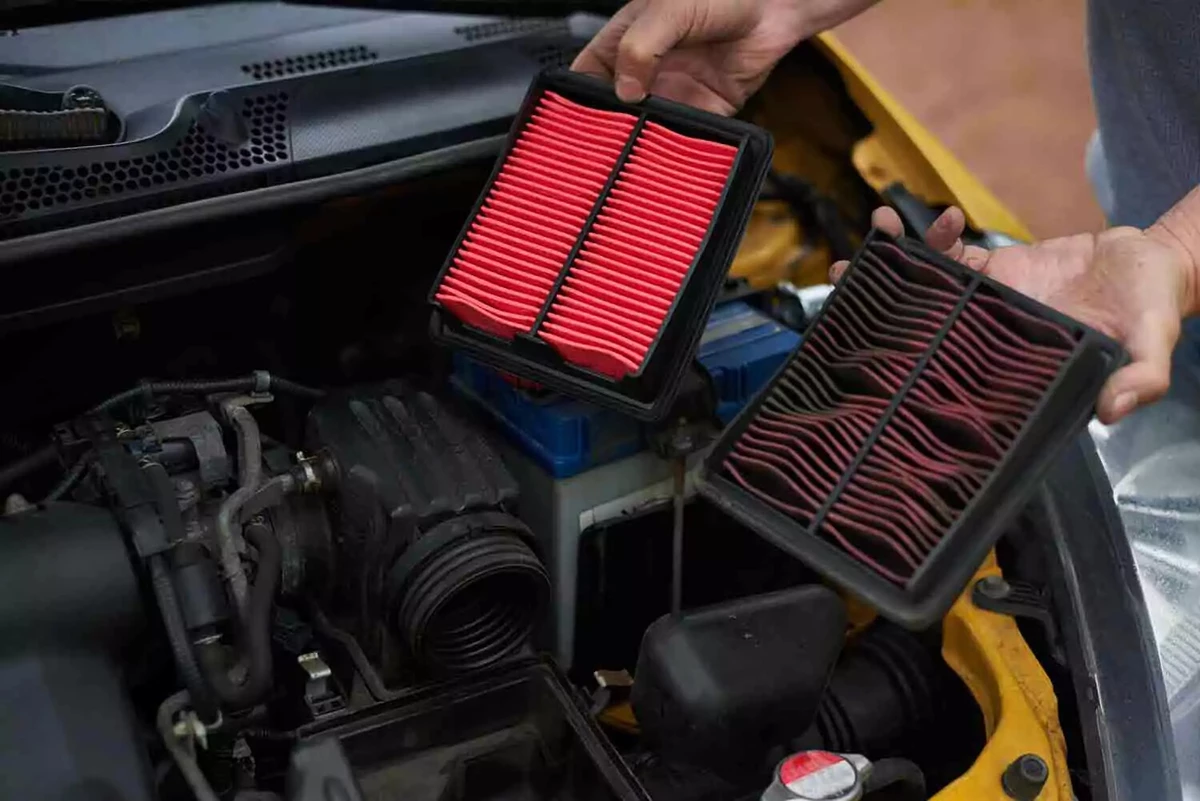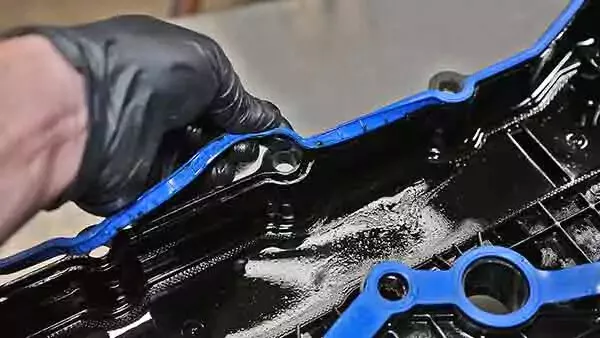The front of your vehicle has a grill to keep out leaves and big debris. But the engine air filter keeps little stuff—like dirt and dust—from getting into your engine. Eventually, air filters clog, and clogged air filters choke the engine, reducing efficiency and performance. While the air filter is considered a minor engine item, it’s critical to daily operation.
In this article, we explore the basics of the engine air filter and the signs that it’s time to replace it. We also cover how difficult the engine air filter is to replace and what you may need to get the job done.
Most Engine Air Filters Need to Be Replaced, Not Cleaned

The engine air filter on the right is overdue for replacement.
Nearly all modern vehicles use the same kind of engine air filter. It looks like the one in your home air conditioner. It’s a rectangular frame around pleated paper. Replacing it couldn’t be easier.
You pull out the old one and put a new one in its place. That’s the best approach.
Yes, you can clean it, but it’s like cleaning an AC filter. You can bang it or whack it to get some dust and dirt out, but this is a delicate item. It’s not meant to be hit with compressed air. It’s not meant to be washed.
If you drive an older vehicle or you have swapped to a high-performance air filter, you may have a foam, cotton gauze, or synthetic filter that is meant to be washed and cleaned. A simple cleaning method is to spray it with a light degreaser or soak it in water and dish soap. Let it air dry. If it is a cotton gauze filter that is also oiled, you have to lightly re-oil it.
Of course, none of this cleaning advice is necessary if you just have a stock modern vehicle with a standard air filter. Replace instead of cleaning it.
Signs of a Dirty Engine Air Filter

A dirty air filter might trigger a check engine light.
If you can’t remember the last time your air filter was cleaned, it’s time to take a look. Open up the air cleaner—the black box next to your engine under the hood. Pull out the filter. See how much light passes through it. If the filter looks dirty or dark and has debris falling off of it, clean it or replace it.
Here are other signs that it’s time to replace your engine air filter.
Check engine light: There are a lot of reasons that cause the light to come on, including a lack of air. Use your OBDII scanner to find out the cause.
Decreased performance: If the engine isn’t getting the right amount of air, there could be a decline in performance, often exhibiting slower acceleration or more effort required to get to higher speeds.
How long do engine air filters last?
Most manufacturers recommend changing the automotive air filter or cleaning it (depending on the type) every year or 12,000 miles. It’s considered one of the most basic maintenance jobs. The lifespan of gauze-style engine air filters goes further, possibly up to 50,000 miles.
Consider changing your engine air filter more frequently if you spend summers road-tripping through the desert or off-roading in the woods. The same is true if you get salt misted onto your windshield or you blast through dirty puddles during the winter.
What happens if you don’t replace or clean the engine air filter?
A clogged filter makes your engine wheezy. It’s bad for power and fuel economy. It can also throw off your mass air filter and trigger a check engine light. In the worst case, it chokes out your engine and can result in engine damage.
How long can you drive with a bad engine air filter?
While you may be able to drive with the clogged air filter—and still get from point A to point B—you shouldn’t. The added stress to the engine is causing unnecessary wear. Considering how cheap the filter is and how easy it is to replace it, there’s no reason to put it off.
Engine Air Filter Replacement Is Cheap and Easy

After the air cleaner box is open, sremove the old air filter, and replace it with the new one. Tighten the fasteners, and you’re done.
See our complete step-by-step guide for how to change an engine air filter. It takes less than 30 minutes. It’s a matter of finding the engine air filter and pulling out the old one. The most complicated tool required is a screwdriver.
Remember that only dedicated reusable engine air filters can be cleaned and reinstalled. Basic paper filters may need to be replaced each time. If you plan to clean your air filter, you only need a solution and some water. A bottle of dish soap or light degreaser only costs a couple of bucks.
Maintenance While Changing Your Engine Air Filter

Changing your cabin air filter keeps the interior smelling fresh.
Changing the filter is part of regular maintenance. With each change, we recommend cleaning the filter housing to ensure there’s no remaining debris before installing the new filter.
Depending on the change interval, it could be a good time to change the motor oil and filter. You may also need to change the cabin air filter, which is responsible for removing debris from the air you and passengers breathe in the cabin.
Finally, check all of the fluid levels, such as tire pressure, automotive belts and hoses.
Share your feedback
This article is meant to provide general guidance only. Automotive maintenance, repair, upgrade, and installation may depend on vehicle-specifics such as make and model. Always consult your owner's manual, repair guide for specific information for your particular vehicle and consider a licensed auto-care professional's help as well, particularly for advance repairs.




























































